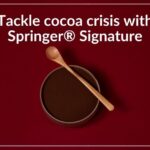In 2020, when chaos unfurled with the rapid global spread of coronavirus, comfort to counter uncertainties was sought in all aspects of the confined life. With a reduced number of trips allowed to the grocery stores, disrupted supply chains and fresh-foods shortages, consumers literally ‘bagged’ this comfort from packaged foods bearing long shelf lives. Snacks seemed to perfectly fit the bill and thus, taking on the role of the protagonist, they started adorning the pantry shelves of consumers across the world. While delivering a crunch, flavours, mouthfeel remained as the standard expectations from snacks, more and more consumers started seeking additional functionalities from these mini-meals.
Taking care of one’s immunity amidst a global health crisis meant that snacking had to be more mindful and multipurpose than ever before. Simply satisfying small hunger pangs wasn’t going to cut it for the snacks. They needed to become more exciting while staying familiar, healthy while staying indulgent, filling but not too calorie dense and a bunch of other oxymorons. Despite these challenges, brands and players in the snacking sector were able to crack these codes of consumption and make it one of the fastest growing product categories in the recent years.
Claim to Fame– Driving forces behind the growth of the snacking sector
Home confinement and restrictions to movement had several repercussions on consumption practices giving birth to new food scripts and creating space for innovation. For an entire generation of travel lovers, not being able to check off destinations from their bucket lists also robbed them of experiencing the local cultures & cuisines of the aforementioned destinations. Snacks, which are often known to take inspiration from global street foods then became a vehicle of exotic flavours and experimentation. Closure of cafés and restaurants and the need to fill a void of new food experiences further boosted the purchases stemming from wanderlust.
Logistically and financially, fresh foods became harder to obtain making room for food with longer shelf life and greater affordability. However, boosting immunity was one of the top agendas of consumers, they wanted snacks that could make up for the nutrient lack induced by the absence of fresh foods. This is where healthy snacks plugged in. Additionally, to stay fit and evade any risk of COVID, healthier snacks allowed weight management to compensate for the fall in physical activity or due to inaccessibility to the outdoors. Towards the end of 2019 and during 2020, a lot of products centred around the gut health such as probiotic chips and fermented snacks also cropped up around the world. The focus on functionality drove innovation in snacking with a hope to reap more from less.
Snacks are invariably associated to comfort but during the pandemic, they also became a refuge from the uncertainties created by the virus. Snacking either meant going back to nostalgic favourites- channelling the warmth & security of childhood or taking momentary respite from the humdrum of work from home. The snacking moment became a moment of stress-related or binge eating through which the consumers coped with the circumstances. This in turn led to an increased demand for energy & mood boosting choices that wouldn’t involve much culinary effort.
The Implications– ‘Brain bites’ & more
The blurred lines between work and breaks – home and office – made snacking frequent, celebratory and functional across the world. “We’re in the middle of a snacking evolution. 47% of consumers eat three or more snacks a day, up from 43% in 2015. People aren’t snacking at traditional times. They are snacking all throughout the day.”
And since the snack consumption has increased, consumers are choosing to offset the extra calorie intake with healthier choices. The two main nutrients consumers are seeking to add to their diet are- Fibre & Protein. Snacks as a category is a wonderful space to deliver these two, an insight already identified and acted upon by several players in the US.

Reducing impact on the environment was a top priority for consumers and snack companies all along, but the pandemic has accentuated the ‘do-good’ factor. Consumers pay heightened attention to corporate responses focused on social action, including support for the vulnerable, for local farmers and communities, employees, suppliers, and other business partners. Therefore, major snack companies have started including more sustainable ingredients, reducing waste in packaging, in general making a positive impact on the planet and its inhabitants.
The expansion of plant-based products is one of the most significant current themes in the food industry overall. This theme propelled by health, the environment, and animal welfare has penetrated snacks, with vegan versions of conventionally meat based savoury snacks such as jerky or entire brands selling completely plant-based munchables. While the number of vegan and vegetarian consumers is small worldwide, the number of people who are trying to limit their consumption of animal products is much more significant, and snacks are an easy meal for these consumers to do so.
To minimize the risk of being infected by the virus, consumers took to ecommerce platforms and started using minimum contact delivery services. The growth of e-commerce has been one of the biggest consequences of the pandemic. The boom in 10-minute grocery delivery platforms still continues. For players in the snacking industry, this means re-aligning their distribution channels accordingly. Snacks companies are embracing the new digital ecosystem not only to increase sales, but also to understand and engage with consumers. This has translated into the launch of direct-to-consumer websites, livestreaming events, and the use of social media to connect with consumers, in particular via TikTok.
Flavour & texture remain in the spotlight as crunchy, puffed, popped snacks top the charts. With experimental consumers willing to seek experiences outside of their comfort zones, innovative and quirky flavours & textures are all the rage. Unconventional bases, descriptive names, word play, limited edition launches, layering up on textures, thinning the product, topping it with something unusual like seaweed flakes or playing with contrasts are the go-to themes identified across the industry that are here to stay.
The gut-brain axis becoming mainstream knowledge and an amplified focus on immunity creates room for further innovation in the probiotic savoury snacks’ domain. While some probiotic chips are present in the market, a combination of prebiotic and probiotic is the next big area that remains unexplored. Additionally, the appeal of snacks to enhance cognitive function has been understood by seed & nut manufacturers who are now marketing walnuts as ‘brain bites’ for instance.
A generational variation in perceptions of snacking and snack-time has also been identified. Millennials snack to cope with stress whereas Gen Z consumers tend to snack for comfort. And households with children under the age of 18 are most likely to turn to snacking to manage alertness and focus.
Overall, snacking habits are more malleable than other kinds of traditional consumption habits owing to the briefness of the moment, a relatively new admission to the quotidian, no set codes of consumption and the potential of novelty. The pandemic has unravelled new avenues for snacks by bringing the conversation back to health, environment & open-mindedness. In this regard, there is much scope for experimentation and synergies by hopping on to the snacking 2.0 bandwagon!









